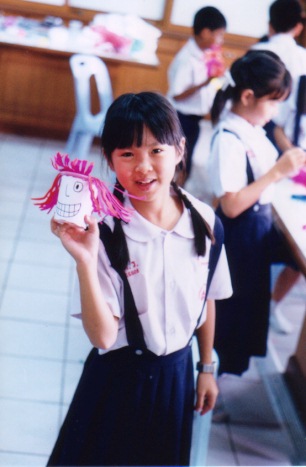
CUPPETS
An Art/English Lesson Plan
by Kristin Cozzolino

DARUNARATCHABURI SCHOOL, Ratchaburi, Thailand
The following lesson plans were born out of the desire to make a puppet with absolutely no materials. Redley, the first of several puppet visitors to my classroom, was created out of a plastic cup, a sock and some bright red paper. Even though she came from such humble beginnings, Redley was an instant hit. As soon as she came to class the students lit up and wanted to talk to her. Even the shy students had their arms raised high in hopes of being picked to converse with a plastic cup. Our lesson for the day was about abilities: "What can you do?" and "What can't you do?" "I can jump...... I can read...... I can't swim." Redley worked well in this context because she could easily be manipulated to show the active verbs. And there are some things a puppet just can't do. The students used English naturally and comfortably. Some kids came up to the front of the class and took Redley to talk with their classmates. This promoted conversation between the students and a certain amount of chaos. I continued to use other puppets in my classes and found them to be an excellent tool for a variety of lessons.
Since I am also the art teacher, I decided to make these puppets with the students to give them the opportunity to create their own characters and to use the English language with their peers. Below are a handful of lessons I did with my students, grades one through four. Each lesson took a 50 minute class period and used minimal materials: plastic cups, socks, poster board, colored paper, markers, tape and scissors.
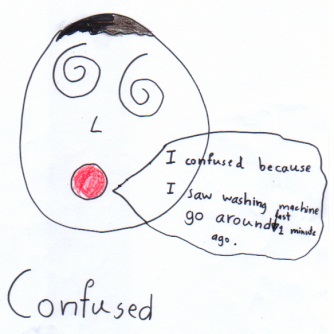
Lesson 1: Getting emotional
In the first class we discussed emotions. We talked about how facial features change when you feel a certain way; for example how your eyebrows slant down if you are angry, or how your eyes get bigger and your eyebrows arch when you are surprised. Each of the students did drawings of faces demonstrating various emotions. The older students also wrote descriptions of why their faces felt the way they did. This reviewed a previous lesson in which we studied the use of the words 'why' and 'because.'
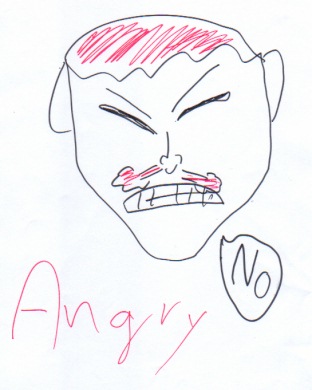
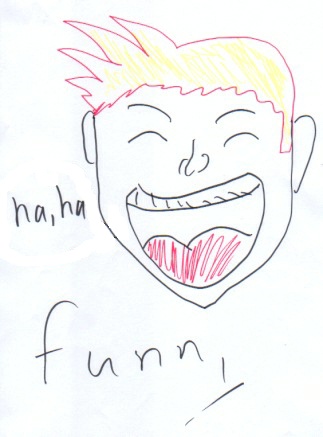
When the kids were done drawing their faces I had them draw each other. The boys really got into making sneering faces while their partners drew them. There were plenty of grunting noises and laughter in the room to accompany the expressions.
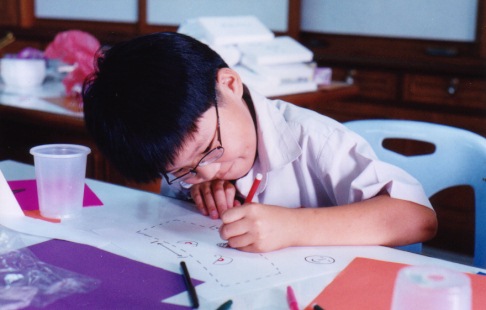
Lesson 2: Cuppetheads
The first step of making a cuppethead is to draw a face. I gave the students a template (see bottom of page) to follow so their faces would perfectly fit the cups we were using. Some of the students used their previous drawings to get ideas for their puppet's features. I drew a happy face in the top right corner of the template so the students would know what direction to hold the paper. Bank3, above, was so focused on drawing his face he didn't seem to notice he had the paper upside down.
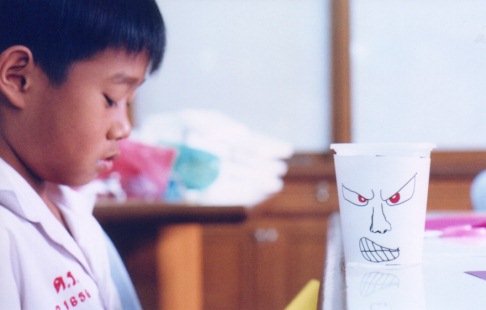
After their faces were drawn, they cut them out along the dotted lines and taped them to the cup. I had already cut fingerholes in the bottom of the cup, sparing myself the grief of monitoring thirty two young kids with utility knives. On the bottom of the cup there were also little pieces of masking tape for the students to write their names.
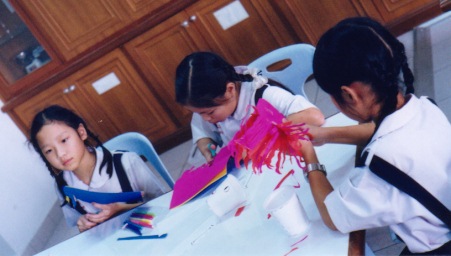
The second step of making a cuppethead is to give it funky hair. We used vividly colored construction paper and a lot of rampant creativity. The students folded the paper lengthwise and then unfolded it. Using scissors, they cut the paper in strips from one long edge all the way to the crease. They rolled the cut paper into a cylinder and stuck the uncut edge into the cup. Depending on the length of hair they wanted, the students might cut the bottom edge before taping the cylinder in the cup.
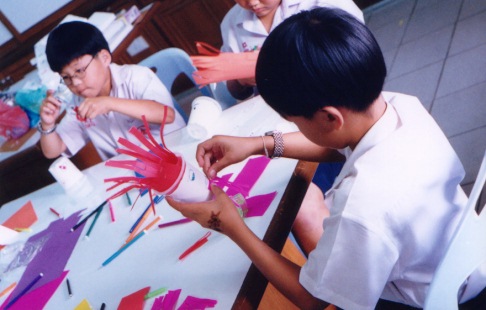
At this point the kids went off in every direction. Many spent a great deal of time styling and cutting the hair. Puppets appeared with punky spikes, long, bouncy hair and several colors stuck together. Some of the students rolled the ends of the hair to make curls, others folded the hair for a crimped style. Some gave their puppets beards and/or sunglasses.
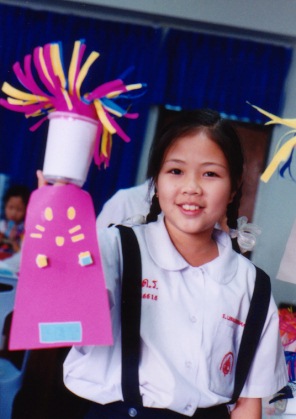
Lesson 3: The Cape
For this class I gave the students another template, this one for a cape. (see bottom of the page) The students traced it onto poster board and cut it out. They spent the better part of an hour decorating their capes with multicolored paper shapes and magic markers. I wish we had had sequins, buttons, fabric or stickers to work with. As it was, the kids still came up with some great ideas.
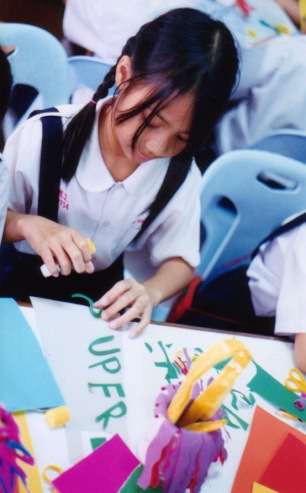
Some of the kids even decorated the inside of the cape, which was the dull gray side of the poster board.
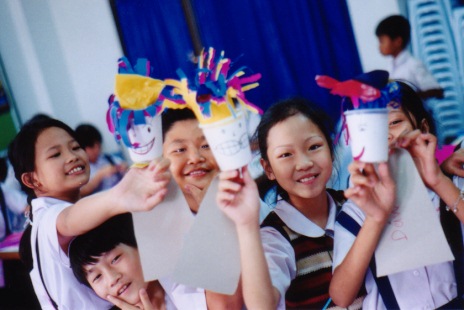
We stapled the cape straps to each other and put the whole puppet together. I gave all the kids socks with arm holes already cut. The students first put their sock on, using their thumb and middle finger as the puppets' arms. The index finger supports the cuppethead. Next, the cape goes on and then the head. The students loved their creations and spent the rest of the class flying around the room and playing with the other puppets. There was lots of noise and laughter- just what an art class with thirty-two Thai children should be.
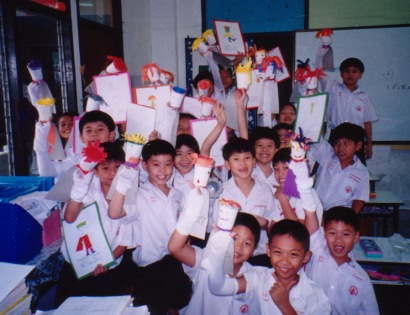
Further Lessons: Combining Art and English
As the school year was ending, I didn't have time to do all these lessons with each grade. In some grades the students drew a picture of their puppet. I had them include some written English, topics we had covered previously including the puppets name, how old it was, it's favorite foods and it's favorite things to do. When the kids were finished they glued their picture to a bigger piece of colored posterboard to frame it.
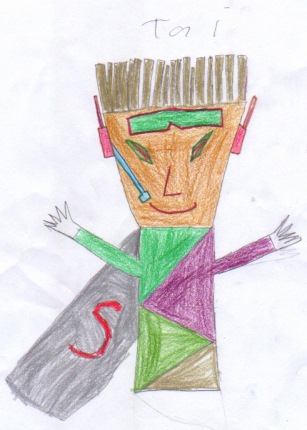
In my English class I put the students in groups of three and had their puppets talk to each other. They asked each other questions about name, age, hobbies, likes, dislikes and abilities. The class came alive with voices and excitement. It wasn't long before the whole class left their small groups to mingle and talk with all the other puppets. To end the class with a calmer activity, I had two students at a time come up to the front of the class and have a conversation on similar topics. The kids loved it. I found it especially gratifying to see them using English with no prompts but their puppets. The kids were justifiably proud of their cuppets and played with them in classes all day.
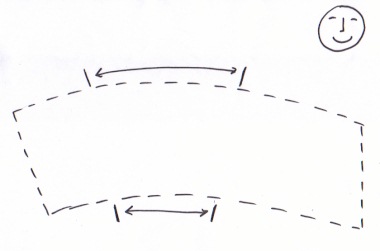 cuppethead
template (greatly reduced)
cuppethead
template (greatly reduced)
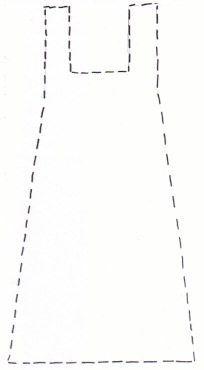 cape template
(also greatly reduced)
cape template
(also greatly reduced)